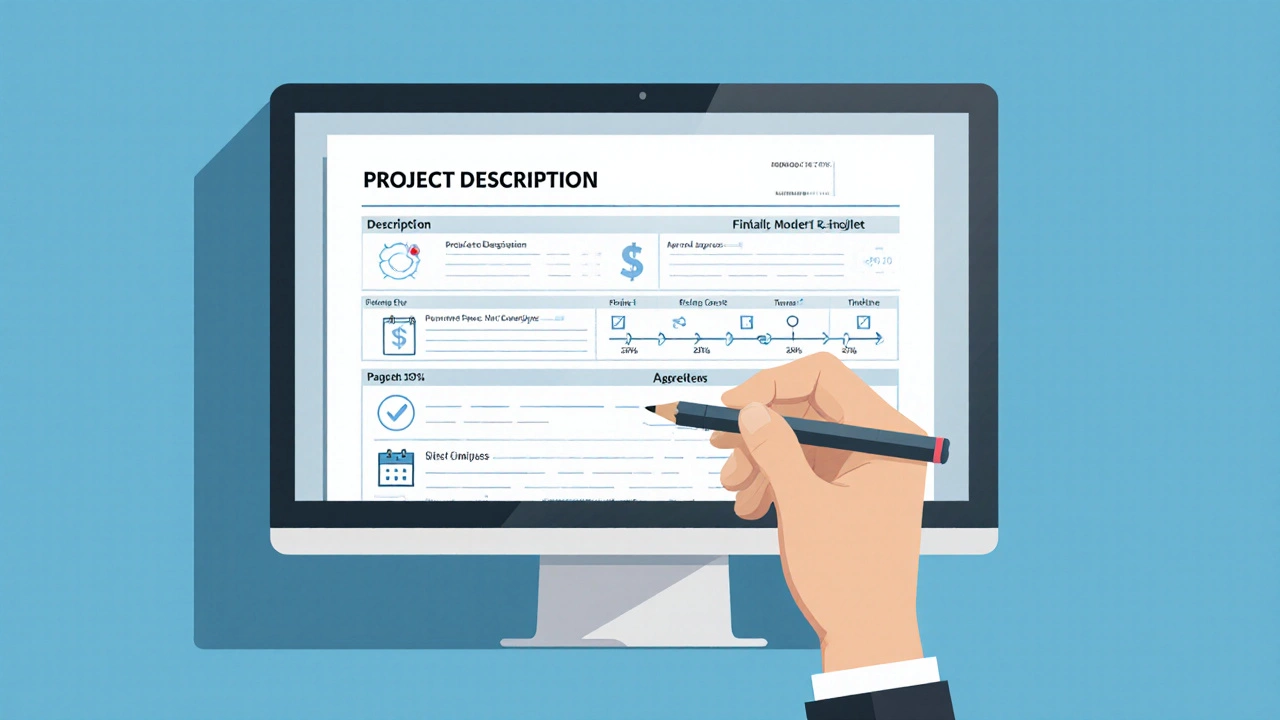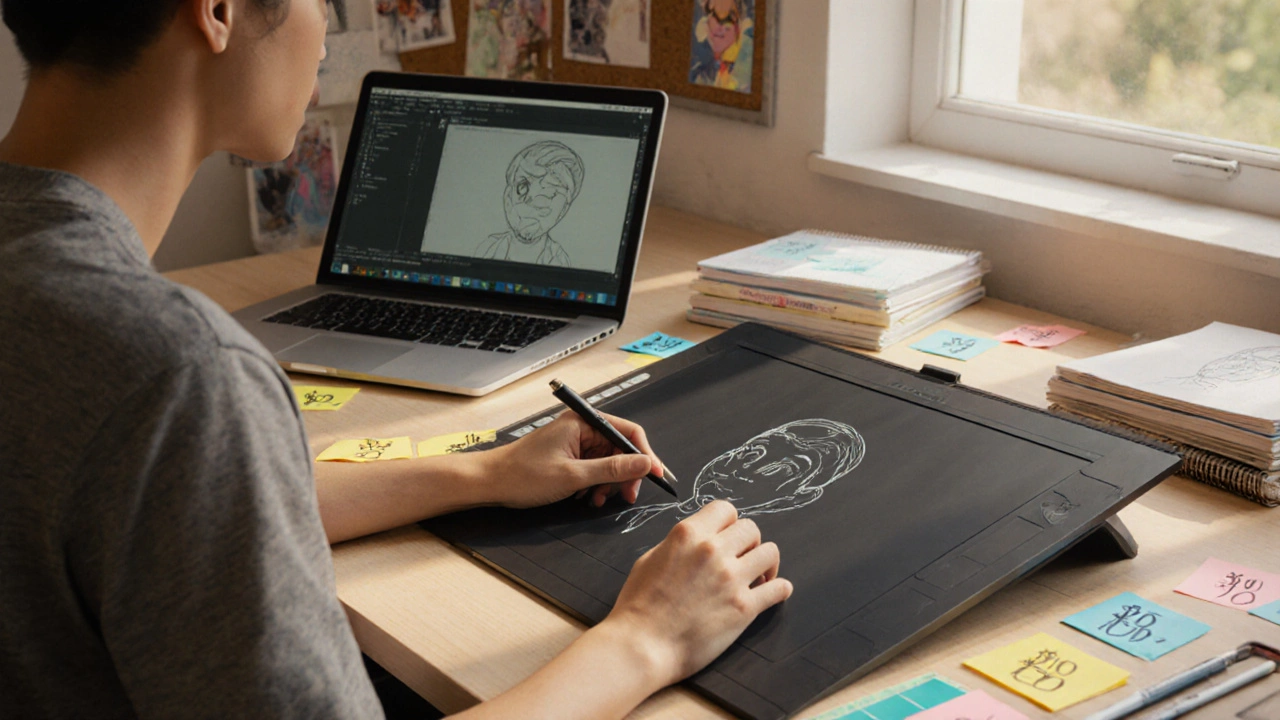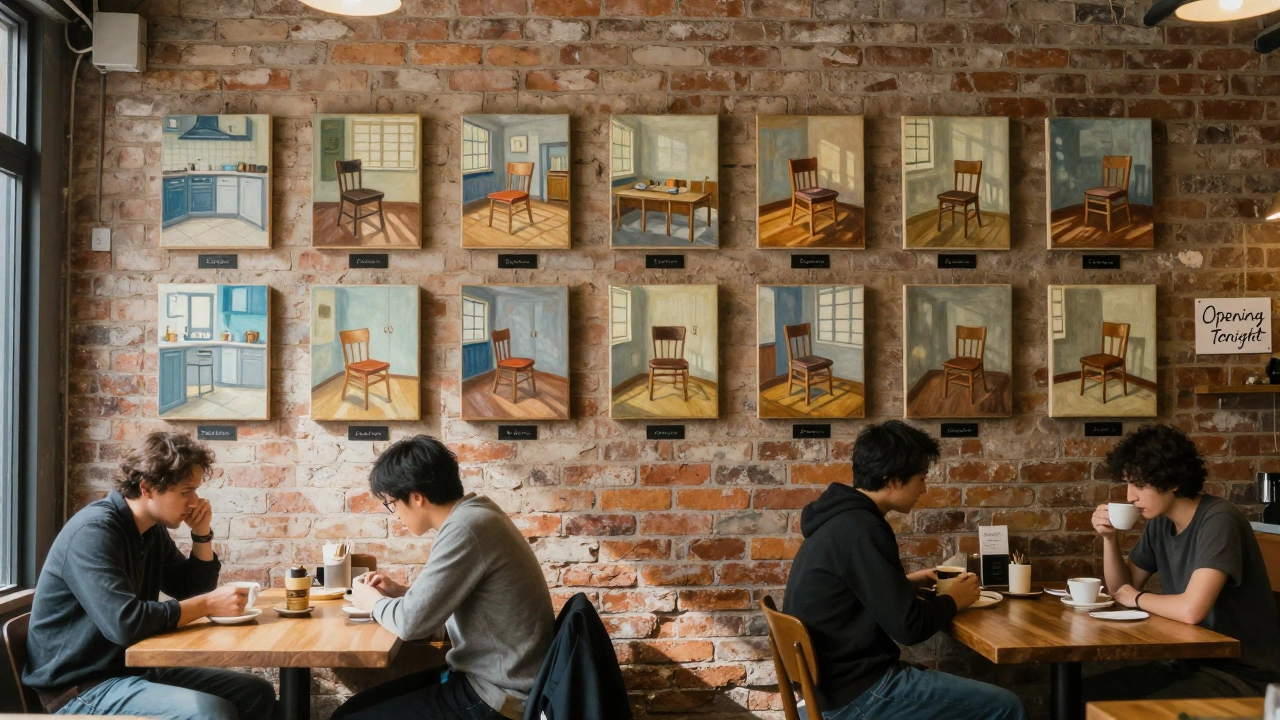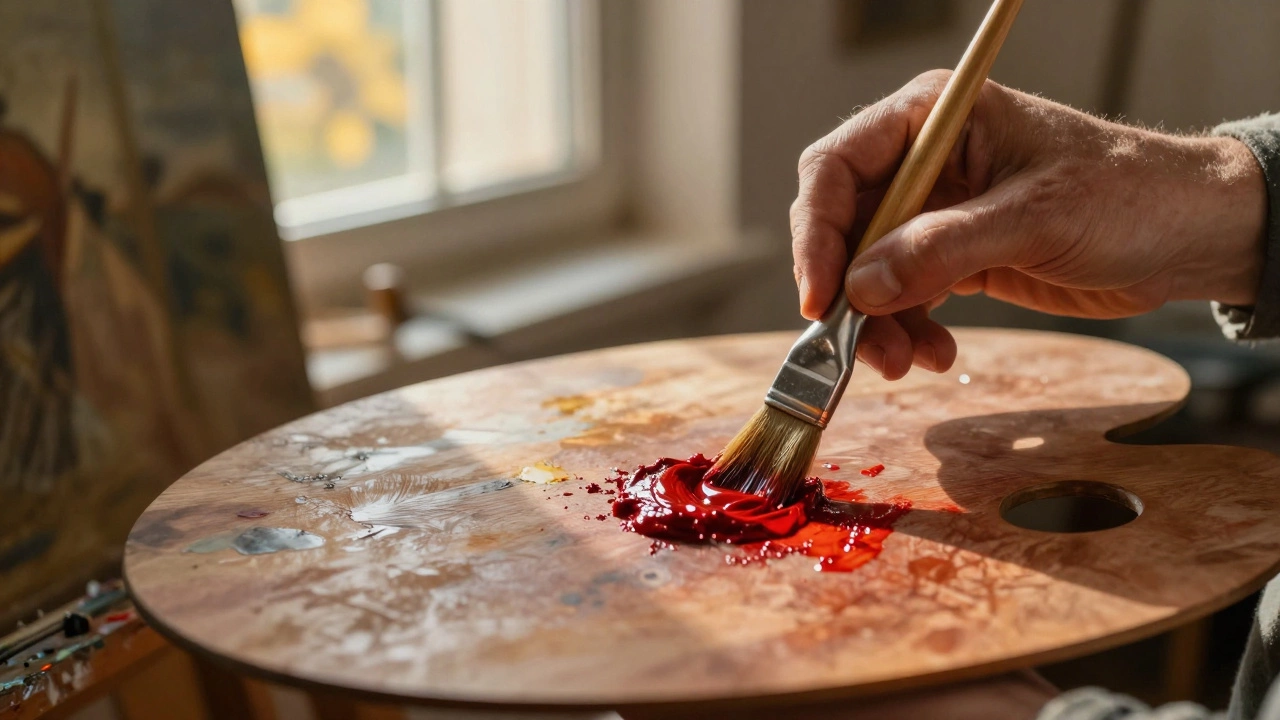Digital Artist Pricing Calculator
Pricing Breakdown
- Base Price $0.00
- Complexity Adjustment +0.00%
- Revisions Cost $0.00
- Usage Rights Adjustment +0.00%
- Final Price $0.00
Quick Takeaways
- Start with a baseline of $15‑$25 per hour for your skill level.
- Factor in project complexity, revisions, and usage rights when setting flat fees.
- Use a tiered package system to make pricing transparent for clients.
- Track every hour and expense; adjust rates as your portfolio grows.
- Avoid common pitfalls like under‑charging for commercial use or unlimited revisions.
When you decide to sell your creations, Digital artist is a creative professional who produces artwork using digital tools such as graphics tablets, software like Photoshop, Procreate, or Blender, and often delivers files for web, print, or animation. Figuring out how much to charge can feel like guessing in the dark, but you don’t have to. Below is a step‑by‑step roadmap that turns vague ideas into concrete numbers you can quote with confidence.
1. Know the Market Baseline
Before you write any proposal, check what other beginners in the digital art space are earning. A 2024 survey by the Freelance Creators Association (FCA) showed:
- Entry‑level hourly rates: $15‑$25USD per hour.
- Flat fees for simple character sketches: $30‑$70USD.
- Mid‑tier illustration packages (full‑color, 2‑3 revisions): $120‑$250USD.
These numbers give you a realistic starting point. Remember, rates differ by region, platform (e.g., Fiverr vs. personal website), and niche (gaming assets vs. social‑media graphics). Use the baseline as a floor, not a ceiling.
2. Calculate Your Personal Cost Structure
Every freelance commission has a hidden cost component. Break it down into three buckets:
- Direct expenses: software subscriptions (e.g., Photoshop $20/mo), hardware depreciation (tablet $300 over 3years ≈ $8/mo), and any asset licenses you purchase.
- Time investment: hours spent on research, sketching, client communication, and revisions.
- Overhead: internet, electricity, and your share of taxes (roughly 25% in Australia for freelancers).
For example, a 5‑hour illustration might look like this:
- Direct expenses per project: $5
- Time cost (5h×$20h⁻¹ target): $100
- Overhead (25% of $105): $26.25
Total minimum price: $131.25. Round it to $135 for simplicity.
3. Choose a Pricing Model That Fits the Job
Clients react differently to hourly vs. flat‑fee structures. Here’s a quick comparison:
| Aspect | Hourly Rate | Flat Fee | Tiered Packages |
|---|---|---|---|
| Transparency for client | Low - client sees only total hours after work | High - price known upfront | Very high - multiple options displayed |
| Risk to artist | High - scope creep can inflate hours | Medium - must estimate accurately | Low - each tier has clear limits |
| Best for | Complex, iterative projects | Simple, one‑off pieces | Clients who like choices (e.g., starter, pro, premium) |
| Typical beginner range | $15‑$25USD/h | $30‑$150USD per piece | $80‑$300USD per tier |
Most newcomers start with flat fees for small jobs and graduate to tiered packages once they have a solid portfolio.
4. Factor in Project Variables
Three variables often shift the baseline price:
- Complexity: a single‑character portrait vs. a full‑scene illustration. Add 20‑30% for high detail.
- Revisions: limit to 2-3 rounds. Charge $10‑$15 per extra revision.
- Usage rights: personal use (no extra cost), commercial use (add 50‑100% of base fee), exclusive rights (double the price).
Example: A $120 flat fee for a character sketch becomes $156 if the client wants commercial rights and expects three revisions.
5. Present Your Quote Like a Pro
Clients appreciate clarity. A simple quote template includes:
- Project description and deliverables.
- Chosen pricing model (hourly, flat, or tier).
- Breakdown of extra costs (revisions, usage rights).
- Payment terms (deposit 30%, final payment on delivery).
- Timeline with milestones.
Using a spreadsheet or a free invoicing tool such as Wave makes it easy to embed the breakdown and keep records for tax time.

6. Adjust As You Grow
Don’t lock yourself into the same numbers forever. Re‑evaluate every 3‑6months based on:
- New skills (e.g., learning 3D modeling adds value).
- Portfolio upgrades (more client testimonials = higher trust).
- Market shifts (inflation, platform fee changes).
When you raise rates, announce the change politely and give existing clients a heads‑up. Most will respect the professionalism.
7. Common Pitfalls & How to Avoid Them
- Under‑charging for commercial use. Always ask how the artwork will be used and apply the usage‑right multiplier.
- Unlimited revisions. Define a clear revision policy in the contract.
- Relying on “I’ll figure it out later.” Create a simple pricing cheat‑sheet and refer to it each time you draft a quote.
- Ignoring taxes. Set aside at least 25% of every payment if you’re in Australia; use a spreadsheet to track.
Checklist for Your First Quote
- Did you research market baseline rates?
- Have you listed all direct expenses?
- Did you choose the appropriate pricing model?
- Did you calculate complexity, revisions, and usage‑right adjustments?
- Is your quote broken down into transparent line items?
- Did you include a deposit and payment schedule?
- Have you set a revision limit in the contract?
Frequently Asked Questions
What is a realistic hourly rate for a brand‑new digital artist?
For most beginners in 2025, $15‑$25USD per hour covers basic software costs and leaves room for profit. Adjust upward once you have a solid portfolio and repeat clients.
Should I charge more for a piece that will be printed on merchandise?
Yes. Print‑on‑demand or large‑scale merchandise counts as commercial use. Add 50‑100% to your base price, depending on the print run size and exclusivity.
How many revisions are reasonable to include for free?
Two to three rounds of minor tweaks is standard. Anything beyond that should be billed per extra revision (usually $10‑$15 each).
Is it better to bill hourly or by flat fee?
Flat fees provide clarity for small, well‑defined jobs, while hourly rates protect you on open‑ended projects. Many freelancers start with flat fees and add hourly billing for larger contracts.
How often should I raise my rates?
Every 3‑6months is a good rule of thumb, especially after you add new skills or update your portfolio with higher‑profile work.





